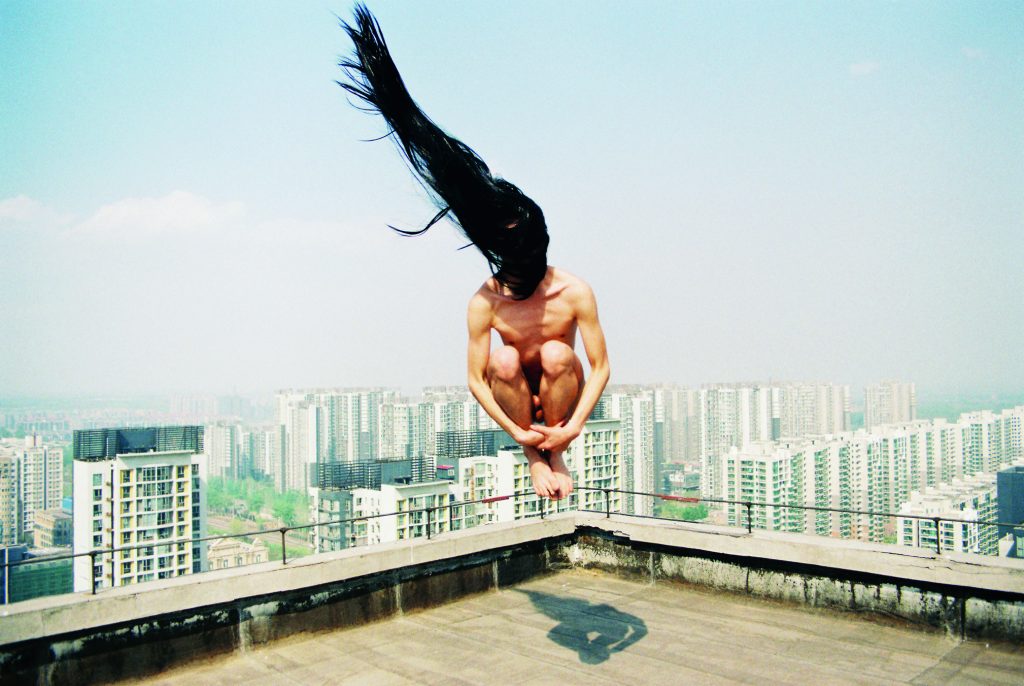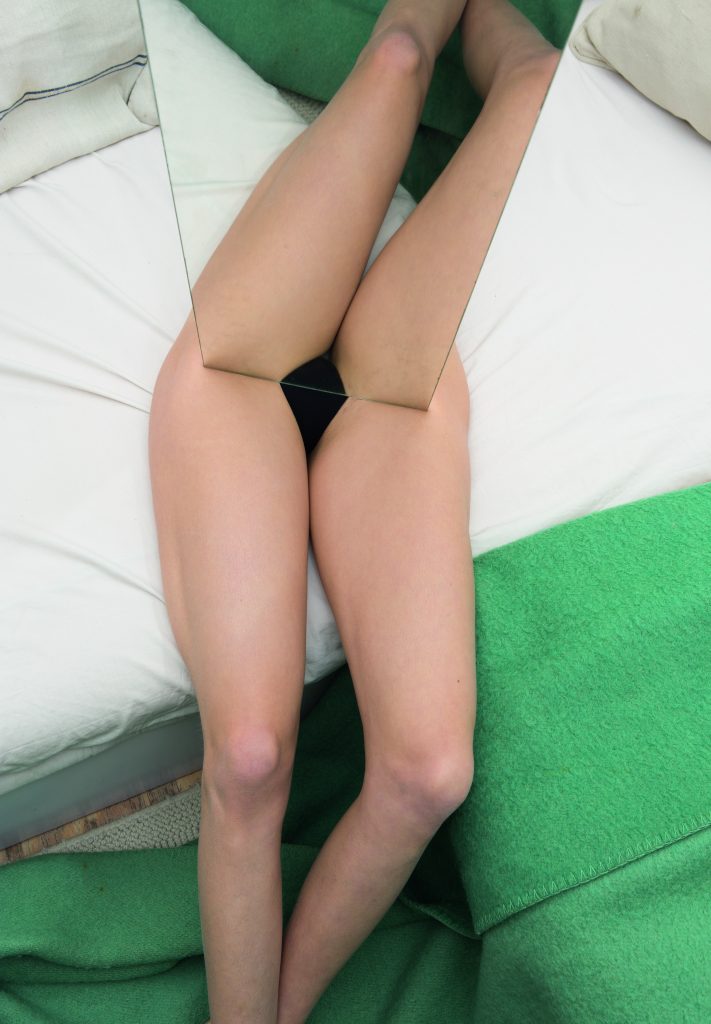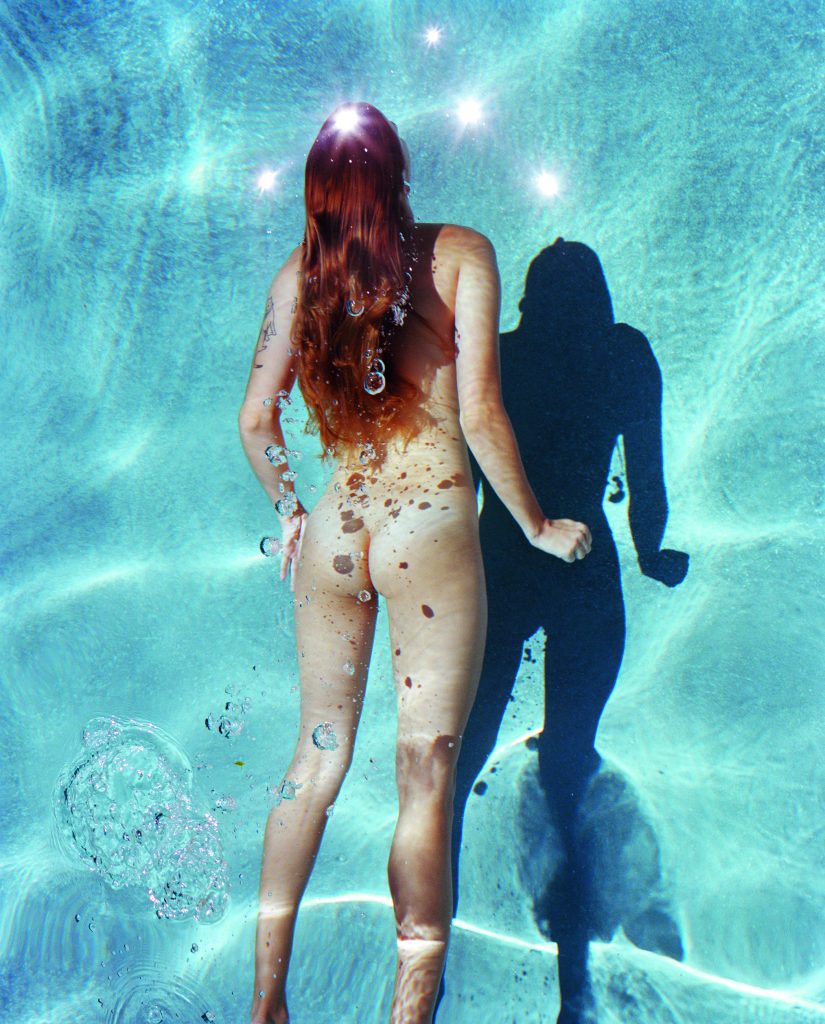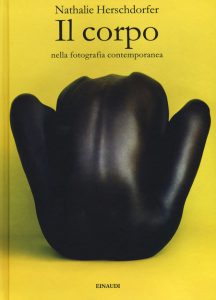by Daniela Mericio
_
The thousand faces of the human body and the different ways of showing and depicting it.
Published by Einaudi in the Great Works series, Body explores the relationship, in the current age with our “outer shell”, through its representation in contemporary photography. Curator Nathalie Herschdorfer, director of the Museum of Fine Arts in Le Locle, Switzerland, collected, after extensive research, the 360 images of the book taken by 175 photographers of different background (including Nobuyoshi Araki, Bettina Rheims, Lauren Greenfield, Viviane Sassen, Cindy Sherman, Wolfgang Tillmans, Daido Moriyama, Sally Mann, Pieter Hugo, Juergen Teller, Sølve Sundsbø and Daniel Sannwald).

Has photography a major impact in the perception of our body? What is the current idea of it?
We are surrounded by images, we see them everywhere. If you think of the way we perceive beauty… everybody wants to have a great body. We have to be healthy, thin, good-looking. All this depends on the photographs we see in magazines, media, on the web: these pictures of what we regard as beautiful bodies become a reference for us and they have an impact on the way we treat our body.
Photography has always dealt with human body. William Ewing explored the subject in the anthology “The Body” published in 1994. You started your work where he stopped, what has changed in the last 25 years?
We don’t think that the body we have when we are born is the body we have to keep until we die: today we believe that it can be modified, somehow re -created. We can play sports to be fit, we can take pills to improve our health, we can have access to cosmetic surgery which is not that expensive anymore: we can have different treatments and all of them have become so common that we think that we can change our body to our needs. If once we had to live with the body we had, what is new in the XXI century is that we think the body can be improved, creatively, if you wish. It is all related to the images we constantly see: the message is that we can modify our body and that it is quite simple. This is a kind of dream. The XXI century is the digital age and digital technology has a new impact on the way we live. Just think about the way we take pictures, the way we share and alter them. It is interesting to make a parallel with the way we treat the body: we can modify images easily, and somehow we do the same thing on our actual body.

Images in the book show a sort of dichotomy: the body is either glorified, magnified – a super body – or in some way tortured, mortified, altered…
Yes, these are works made by artists, and artists also show the opposite of the glorified body. Because even today we are still mortal, we have diseases. Even though science makes us believe we will go past the limits of the mortal body, we cannot change this. Some photographers show the human and fragile side of the body and this is quite shocking for us, because we are so used to see gorgeous, perfect figures. We don’t like this fragility, we fight all our life against vulnerability. We still hope that, eventually, when we are old and sick, medicine and science will help us rise above it.
The book is a huge work, how did you select the pictures?
First I was thinking about different sections. Everyday I come across photographs and many artists represent human body. So I had my different chapters in mind (construction of the body, glorification of the body, suffering body, loved body, etc.) and I was quite open with them, then I started looking for images that could offer an interesting point of view within these general subjects. At first I had many photographs, thousands of them, and then I decided to separate them in groups to examine the meaning. That’s how I got my different chapters and then I reduced the image selection.

Some of these chapters deal with “Constructions”, “Mutations”… something not natural…
True. Think about what happens today: we fight the natural part, the human and vulnerable part. We live in a society where science is at its peak, we consider progress to be the goal and we know geneticists will get us there. In the Western society we believe we have to fight against this humanity. Of course, you can find people living in remote areas who have a different view but Internet created a similar, globalised world everywhere. It is intrinsic to human nature to believe in the future and in the fact that our life and health can be constantly improved. It is not just something we deal with in the XXI century, it is a result of a very long history.
One section in the book – “Physic” – is about scientific images which are not a work of art or documentation, why did you choose to add it?
From the beginning, when photography was invented in the XIX century, we started to use it in science, for medical reasons. We went inside the body, we photographed cells, we made X-ray to see inside the living body. These images have always been important for research, so I thought they should be part of the book because they say something about how we consider the human body. They are quite abstract, quite beautiful. I found fascinating that today, in the XXI century, we still need to take more images of the inside of the body and, with new technologies, we always find the way to have more precise results, to go deeper. The atlas of the human body is still in progress. Besides, before you are born, the very first image your parents get is the baby in the uterus, of the embryo. It’s interesting to see how photographs play this prominent role in human life, so that’s why it was significant to include science. Also, if you think about cancer, we are still trying to fight it and researchers need to find a way to have images in order to understand the disease better.

The section “Alter ego” is about self portraits, which today means mainly selfies. Is every self representation today influenced by selfies ?
Professionals photographers have to consider that most of the images that are produced today, billions of images, are not taken by them and that has an impact on what artists focus on. They have to think about the flow of images constantly around us and it’s a big challenge for them to create something new. To take acceptable pictures of ourselves we don’t need a professional, so authors have to reflect on how to show things differently.
It seems there are authors or trends that point to a more natural way of representing our body… is this the way out?
This is a way to resist, because everything is so digitally composed, digitally retouched, we are surrounded by images with bright colours and perfect bodies: everything seems fake, but the new generation is trying to go back to something more natural. Of course, if you look at the history of photography, it goes along with the history of society, and there are a lot of stereotypes in the way we photograph female or male beauty. I really have the feeling that with the new generation there is the need to show things differently. If you think about gender identity, more and more we are aware that there are not just two genders. It’s not new, science has shown this aspect, but photography in the past has never done it. Today, young people are taking images that go beyond stereotypes: they show different kind of bodies, more diversity. I also realized there are more women photographers, for a long time this art has been mostly made by men and they would focus on female body, representing it in stereotyped ways: it’s a long tradition going back to the history of art. I think that women photographers, when they depict female bodies or also male bodies, see things differently. That’s quite new, it didn’t exist 50 years ago. There is more space for new visions.

Is there an image you consider a symbol in the book?
There is a portrait I really like taken by the French artist Valérie Belin. She photographed black women in colour. When you see the portrait of these beautiful, young women you think it is highly retouched, like an advertisement. But it isn’t, it is analogic photography, women were photographed the way they were. The photographer came across them in the metro in Paris and she asked them to pose in her studio. They look so retouched…but they are “ retouched in real life”: they wear heavy make up, they changed the colour of their eyes with contact lenses, their hair is the same shade of their clothes. These women had models, and their models are photographs: they tried to create for themselves something close to the wonderful bodies they have seen in images. It’s very confusing because you think that photography can transform us, but in a way we don’t need it, because we are able to change ourselves so much. It’s like having a mask and it shows the impact of images on our idea of body.
A Walt Whitman quote closes the book: “If anything is sacred the human body is sacred”. He is a XIX century poet, is it still true today?
It’s very personal, but today I believe that most people think that the body is not sacred. Anyway, what it is interesting is that the body can also be a new religion. Human body can be improved in a way that makes us believe in the future of humanity… but not the one we have, the new body: the next one.
 The book:
The book:
Nathalie Herschdorfer (curated by)
Il corpo nella fotografia contemporanea
Einaudi, 2019
October 21, 2019




